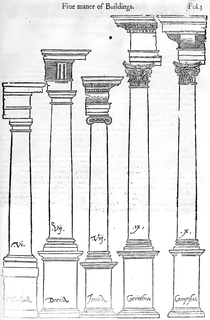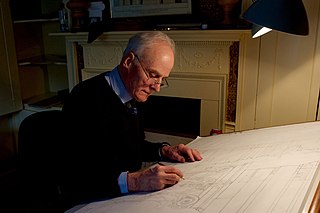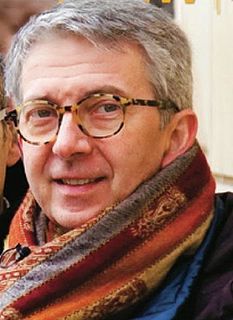The Palladio Award is an architectural prize given annually for "creative interpretation or adaptation of design principles developed through 2,500 years of the Western architectural tradition", widely known as New Classical architecture. [1] The Awards, in several categories, are presented by the Traditional Building Magazine, Period Homes Magazine, and the Traditional Building Conference. [1]

New Classical architecture is a modern movement in architecture that continues the practice of classical and traditional architecture. It can be considered as the modern continuation of the Neoclassical movement and other revivalist movement that may or may not fall to the umbrella term; Classical architecture. The design and construction of buildings in these traditions is continuous throughout the twentieth and twenty-first centuries, even as modernist and other post-classical theories of architecture have been more dominant. Since New Classical architecture is not an architectural style and can appear in various forms, contemporary classical buildings might be also, although not correctly, be described with the terms Traditionalism, Neo-Historism, or simply Neoclassical Architecture, implying the continuation of a specific historical style.
The Palladio is a "coveted" architectural prize given for excellence in traditional design. [2] It is the only national award in the United States given for excellence in classical design. [3]

The United States of America (USA), commonly known as the United States or America, is a country comprising 50 states, a federal district, five major self-governing territories, and various possessions. At 3.8 million square miles, the United States is the world's third or fourth largest country by total area and is slightly smaller than the entire continent of Europe's 3.9 million square miles. With a population of more than 327 million people, the U.S. is the third most populous country. The capital is Washington, D.C., and the most populous city is New York City. Forty-eight states and the capital's federal district are contiguous in North America between Canada and Mexico. The State of Alaska is in the northwest corner of North America, bordered by Canada to the east and across the Bering Strait from Russia to the west. The State of Hawaii is an archipelago in the mid-Pacific Ocean. The U.S. territories are scattered about the Pacific Ocean and the Caribbean Sea, stretching across nine official time zones. The extremely diverse geography, climate, and wildlife of the United States make it one of the world's 17 megadiverse countries.

Classical architecture usually denotes architecture which is more or less consciously derived from the principles of Greek and Roman architecture of classical antiquity, or sometimes even more specifically, from the works of Vitruvius. Different styles of classical architecture have arguably existed since the Carolingian Renaissance, and prominently since the Italian Renaissance. Although classical styles of architecture can vary greatly, they can in general all be said to draw on a common "vocabulary" of decorative and constructive elements. In much of the Western world, different classical architectural styles have dominated the history of architecture from the Renaissance until the second world war, though it continues to inform many architects to this day.










